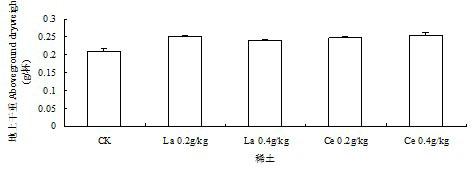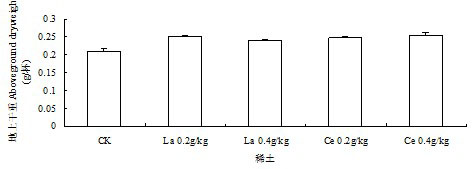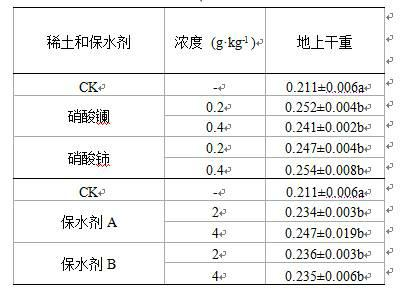Method for improving drought resistance of turf on garbage compost substrate
A technology of garbage composting and drought resistance, applied in gardening methods, botany equipment and methods, gardening, etc.
- Summary
- Abstract
- Description
- Claims
- Application Information
AI Technical Summary
Problems solved by technology
Method used
Image
Examples
Embodiment 1
[0069] (1) Select the lawn plant tall fescue ( Festuca arundinacea L.), the domestic waste compost is selected from the waste compost after fermentation in the waste composting plant;
[0070] (2) Apply 0.2 g·kg to the above 60g compost -1 Rare earth lanthanum nitrate, mix well for use;
[0071] (3) Choose 0.5g tall fescue seeds with full grains and sown them in each cup respectively; control the maximum water holding capacity of the compost field to 66%, the severe stress is 35%, and the normal water supply at the beginning of the experiment to ensure the smooth germination of seeds and seedling growth. After a week, water will be given according to the severity of severe stress, and the control of drought degree will be carried out by weighing method;
[0072] (4) During the cultivation period, the laboratory temperature is 15℃, the relative humidity is 30%%, and the light intensity is 450μmol·m -2 ·S -1 .
[0073] (5) Cut the lawn plants all the roots, rinse the above ground with d...
Embodiment 2
[0075] (1) Select the lawn plant tall fescue ( Festuca arundinacea L.), the domestic waste compost is selected from the waste compost after fermentation in the waste composting plant;
[0076] (2) Apply 0.4 g·kg to the above 60g compost -1 Rare earth cerium nitrate, mix well for use;
[0077] (3) Choose 0.5 g of tall fescue seeds with full grains and sown them in each cup respectively; control the maximum water holding capacity of the compost field to 66%, the severe stress is 45%, and the normal water supply at the beginning of the experiment to ensure the smooth germination of seeds and seedling growth. After a week, water will be quantified according to the degree of severe stress, and the degree of drought will be controlled by weighing method;
[0078] (4) During the cultivation period, the laboratory temperature is 28℃, the relative humidity is 40%, and the light intensity is 600μmol·m -2 ·S -1 .
[0079] (5) Cut the lawn plants all the roots, rinse the above ground with distill...
PUM
 Login to View More
Login to View More Abstract
Description
Claims
Application Information
 Login to View More
Login to View More - R&D
- Intellectual Property
- Life Sciences
- Materials
- Tech Scout
- Unparalleled Data Quality
- Higher Quality Content
- 60% Fewer Hallucinations
Browse by: Latest US Patents, China's latest patents, Technical Efficacy Thesaurus, Application Domain, Technology Topic, Popular Technical Reports.
© 2025 PatSnap. All rights reserved.Legal|Privacy policy|Modern Slavery Act Transparency Statement|Sitemap|About US| Contact US: help@patsnap.com



